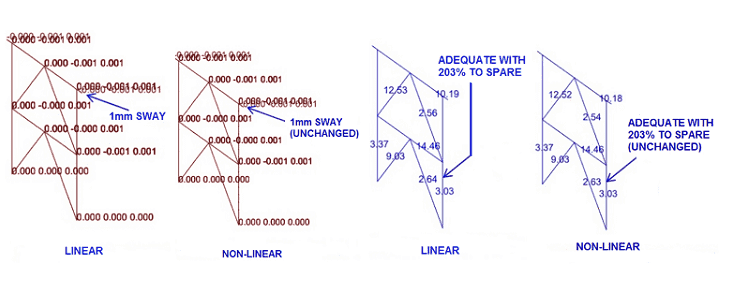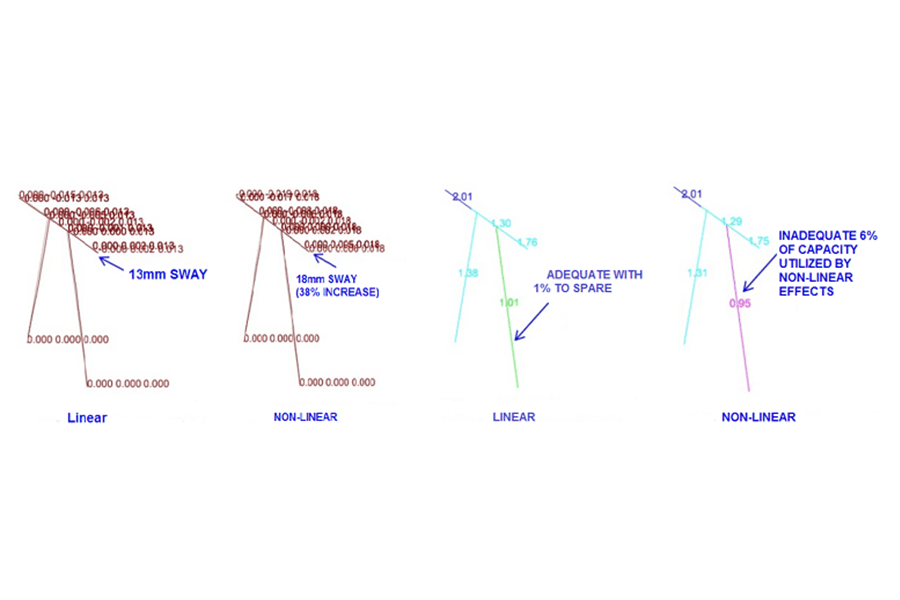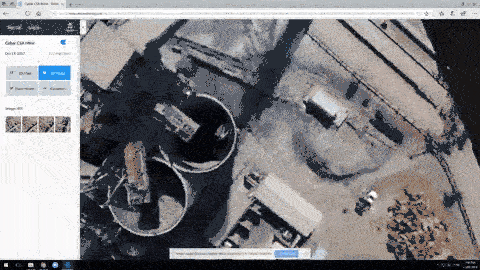All structural analysis software has at least two options when analysing the forces and displacement in a structure.
-
- Linear Analysis
- Non-LinearAnalysis
Why is there a choice? If a structure needs non-linear, why provide linear? Does a structure really need non-linear analysis? Computers are fast – who uses linear analysis anyway?
To answer these questions, it’s worth knowing the difference. Once we know that, we can make a decision about which to use, and when.
Linear Analysis
When we analyse a structure, we get to know how it behaves when loads are placed on it.
Consider a plank across a creek. When a person stands on it, the plank bends. A linear analysis will tell us the deflection of the plank for a given load. We can do this by hand or use a software program such as Microstran or Staad.Pro. Both overkill for a simply supported beam, but who does hand calcs these days?!
What about a more complex structure? There’s various loads – gravity loads from equipment, building materials and people; sidewards loads from equipment, wind or earthquake. The loads act in various directions and combinations. We will definitely use Microstran or Staad. Pro for such a structure and the linear analysis will tell us the same thing – the forces and the displacements under load.
Non-Linear Analysis
The linear analysis results in a structure where the columns are now not dead-straight; the beams have bent and rotated, braces have “shortened” etc and this begs the question – in its new state, can the structure still resist the applied loads?
Prior to 1998, we were happy to say ‘yes’. Linear Analysis was the method and we’d design the members and connections based on the output.
Non-Linear Analysis is merely an extension of linear analysis – the structure is re-analysed with the loads applied but the geometry has changed (geometric non-linearity) or the material behaviour has changed (material non-linearity) or both, and along with this comes the discovery of how structures really behave.
I remember some structures that were deemed compliant when analysed in 2D using linear analysis but no good when modelled in 3D and analysed using non-linear analysis.
Flexible structures and those with really bad structural systems were challenged, as were their designers! Such structures (and designers ?) are still in existence today. But in the main, non-linear analysis, and the associated design rules, gave us more economical structures.
So Which One?
Our software and our computers are getting more powerful. It’s easy just to press the NLA button and wait for the result. But so too are our structural models getting massive. A 2D representation of a truss is now a 3D portion in a model that also includes the trestles, footings, take-up towers and drive station! Putting all that in the software, guessing the sizes and structural systems and expecting a quick and successful analysis is asking for problems.
Design time can significantly increase, and worse, the final resulting structure “works” but would have John Connell turning in his grave if he saw it!
We can get the best outcomes by considering structural systems in part, performing linear analysis on them to assess deflection and better estimate their likely final sizes, and then pack it all together for a final non-linear analysis near the end of the design with predictable results.
Two Case Studies
Case 1 – Braced Frame

This is a typical braced frame. It did not respond any differently to NLA. The structure’s movement was minimal and so therefore, the non-linear geometry change was insignificant
Case 2 – SWAY FRAME (Conveyor Trestle)

Lateral forces from wind or seismic action is going to cause structures to displace significantly. In this example, performing a linear analysis alone would have resulted in a deficient design. The “P-Delta” effects resulting from non-linear analysis reduce the capacity of the columns.
Structural analysis software is merely a tool – use all the features by all means, but not as a replacement for good ‘ol understanding of structural systems and behaviour.
